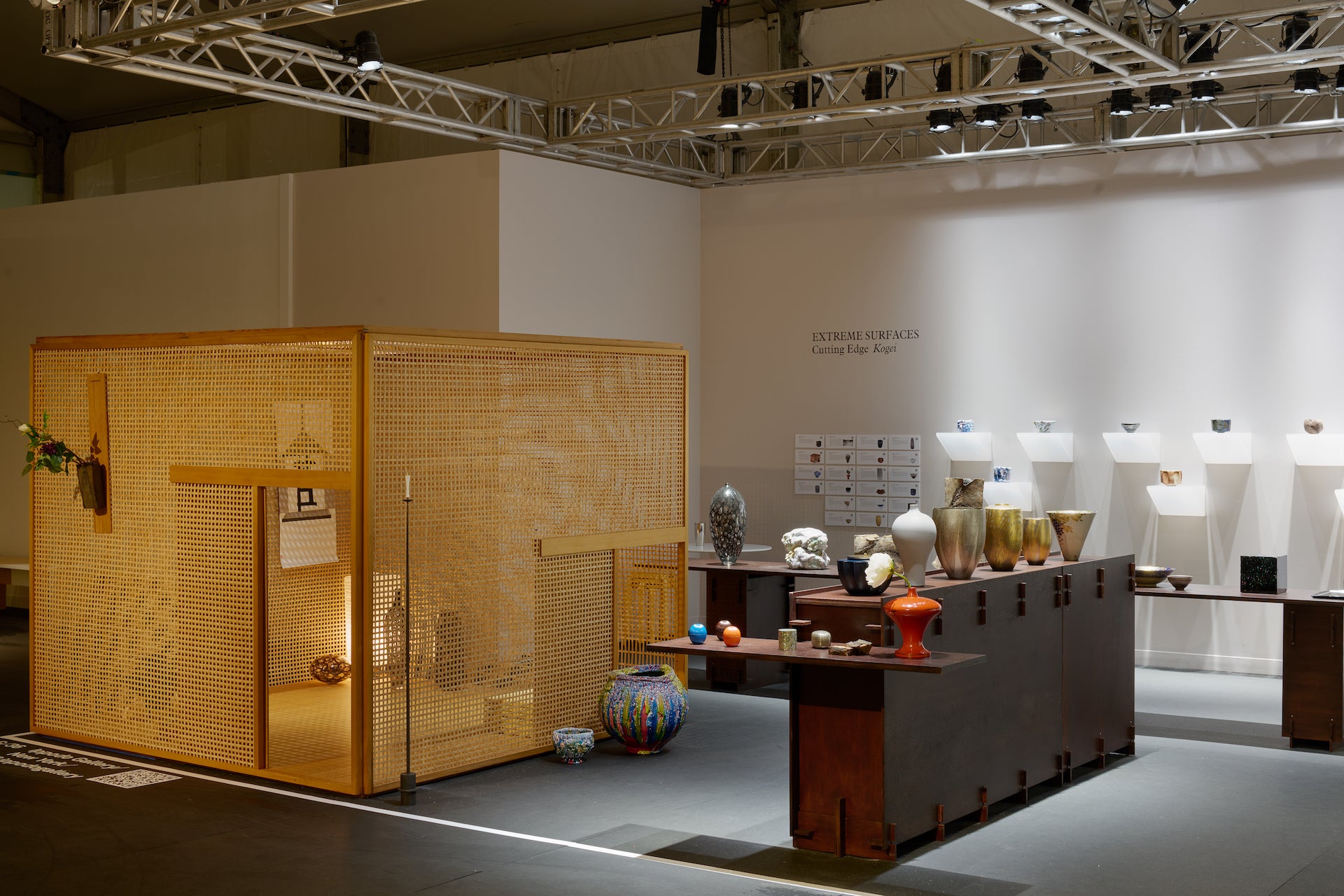Curriculum Vitae
Design for the Senses
Ippodo Gallery reflects the beauty of Japanese culture through intimate exhibits and experiences.
This story was written by Janelle Zara, and first appeared in Miami Design District Magazine’s Winter 2022 issue. It has been slightly edited.
At 26, Shoko Aono arrived alone in New York City from her native Japan. It was November 2007, and as her yellow cab sped toward the Manhattan skyline, she started to feel energized. The air was crisp, the fall leaves were vibrant, and when she emerged from her taxi, she saw people of all backgrounds, briskly walking, holding their paper coffee cups. “I immediately felt like this is my place,” she says.
Aono has never formally studied art—she majored in philosophy—but grew up surrounded by it; she was six when her mother, Keiko, began promoting Japanese artists (her father is a nanotechnology scientist). “The culture is quite westernized in Japan today,” Aono says. “She [my mother] realized she wanted to focus on and foster Japanese culture.” In 1996, her mother opened the first Ippodo Gallery in Tokyo, showcasing kōgei, or traditional arts and crafts, created by living Japanese artists.

After helping her mother with an exhibition at the 2006 Paris Biennale, Shoko realized the academic world could not satisfy her existential questioning—why do humans want to create things that are beautiful?—and decided to expand the gallery overseas. In March 2008, she launched Ippodo New York in Chelsea, where she saw firsthand the differences in selling Japanese art to foreign clients.

Referencing one of famed Japanese designer Shigeru Uchida’s essays, Aono explains that, from her perspective, the Japanese point of view is closer to the ground compared to a Western one: “We are short, and we sit on the floor, and we sleep on futons. We smell the earth, we enjoy the smell of snow,” she says. “That’s why in Japan, seasons are so important. Here in Western culture, life is more up. Art pieces are on a console or cabinet shelves. People wear heels, and life is taller with tables and chairs. They want to talk about art in the house and share their collections in public. Japanese like to put it in a wooden box, hidden away, and just cherish it. It’s a different way of appreciation.”

And then there is the issue of language and how to properly translate artistic sensibility. “I was surrounded by [Japanese art] culture since I was little, and I’ve learned a lot from those artists,” says Aono. But it was her learnings from ancient Greek philosophers like Plato that helped her forge meaningful conversations with her American clientele, especially when so many Japanese terms don’t have exact English translations. She gives the example of the Japanese word “mu,” which can roughly mean emptiness or nothingness: “But when [you say in] English, ‘emptiness or nothingness,’ it’s negative.” It is only through experiencing the art, she explains, such as sipping out of one of the exquisite ceramic tea bowls at the gallery, that one can better understand and truly feel its depth of beauty.

Once ignored by American art buyers, those tea bowls are now in high demand. “Especially in this pandemic, people lost human interaction,” Aono says. “The tea bowl is the only art form in Japan that you sense not only from [sight], but also touch and even kiss with your lips. When you drink tea, you smell the tea, [feel] the warmth of the tea and even hear the sound of the tea making. It is an art form... It holds the most intimate experience with art. You cannot kiss paintings or furniture. That’s why we will always put these tea bowls at the gallery. We believe that this is the core of Japanese culture and art.”


Today, Ippodo Gallery New York is located on the third floor of a pre-war townhouse on the Upper East Side, just steps from the bountiful nature of Central Park. At the top of a spiral staircase, in the main room, visitors are greeted by Aono. She will often invite them to sit across from her at a large table designed by Uchida, and perhaps drink some tea boiled in a kettle that sits over a cut-out hole in its surface. This hospitality is an important element of the gallery experience, further reinforced by the fact that visitors are often invited to physically hold the pieces. The gallery also regularly hosts experiences, including tea ceremonies and Obon festivities—an anomaly in New York’s austere gallery world.

At this month’s Design Miami/, Ippodo presented Extreme Surfaces, a collection of artworks including glazed ceramics, lacquered boxes, textured wood, and bronze patination, as well as one of the tea houses originally designed by Uchida. Visitors were able to partake in a daily tea ceremony, as well as view works by 20 artists. In this way, guests were encouraged to interact in an intimate manner with the artists, even without being in each other’s presence. “These artists connect with the client beyond language,” Aono notes. “I really wanted to bring this dialogue into the gallery. I’m not interested in just selling objects.”
*Click here to see Ippodo’s latest offerings, including shoppable, collectible works from the Extreme Surfaces installation presented at Design Miami/ 2022.
